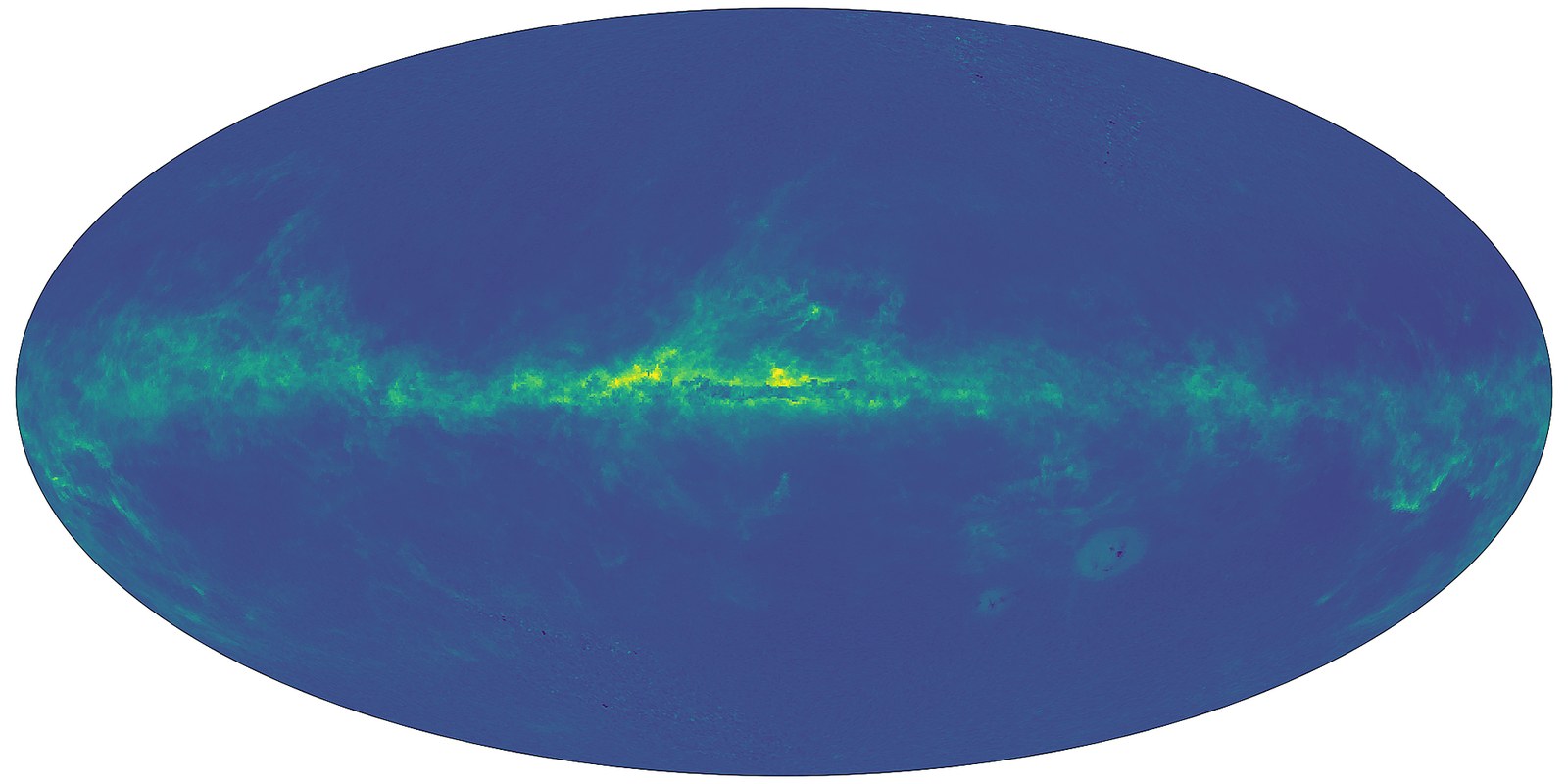One step closer to understanding the Milky Way


- On 13 June 2022, the complete Gaia mission third star catalogue was published.
- Approximately 1.8 billion celestial objects were observed and measured for the publication.
- The highlights include the largest census of binary star systems in the Milky Way to date. In addition, the positions of about 156,000 small bodies in the Solar System as well as numerous transits of exoplanets have been observed and documented.
- Focus: Exploration, Big Data
Unravelling the mysteries of the Milky Way and mapping it in the process is one of the main goals of the Gaia mission. On 13 June 2022, the mission came a step closer to achieving this with the publication of the complete third star catalogue. Gaia observed and measured approximately 1.8 billion celestial objects for this purpose. By the expected end of the mission in 2025, the largest and most accurate star catalogue to date, comprising around two billion celestial bodies, will have been created.
Largest census of binary stars to date
"In the last 34 months, Gaia has gained many new insights and significantly expanded the previous catalogue," explains Alessandra Roy, Gaia Project Manager at the German Space Agency at DLR. "For example, the data contains the positions of around 156,000 small bodies, such as asteroids, in the Solar System. Another highlight is the largest census of binary stars in the Milky Way to date, which is crucial to understanding the formation of stars." In addition, Gaia observed and documented numerous exoplanet transits.
To achieve its scientific goals, Gaia has to record hundreds of celestial objects per second almost continuously. To do this, the spacecraft maps the objects in the Milky Way in three dimensions by measuring their positions, their distances from and their velocities with respect to Earth. The scientific instruments on board measure the apparent displacement of the stars in the sky resulting from Earth's orbit around the Sun (stellar parallax) and distinguish it from their real movement through the galaxy.
Even for the nearest stars, the apparent motion is tiny – it is less than one arcsecond. Gaia measures the position of stars to an accuracy of about one 20-millionth of an arcsecond, "This is equivalent to measuring the diameter of a human hair by an observer positioned 1000 kilometres away," Roy clarifies. "But the spacecraft can do more than that; it also determines the brightness, temperature and chemical composition as well as the age of the nearly two billion objects observed." All these parameters are important for understanding the lifecycle and origin of the observed stars.
Big Data in space
This enormous amount of information is analysed by the Data Processing and Analysis Consortium (DPAC). DPAC is a collaboration of around 400 researchers and software engineers working in six different computer centres across Europe. The processed data are already being used successfully by researchers worldwide; since the beginning of the mission, the information from Gaia has been the basis for around 8000 scientific publications.
Celestial objects have been documented since antiquity; the first star catalogue was compiled in the second century BC by the Greek astronomer Hipparchus of Nicaea. Since then, the records have become increasingly precise. But the measurement of star positions from the ground is limited by the turbulence of Earth's atmosphere. ESA's Hipparcos mission (1989-1993) was the first astrometry space mission and mapped about 120,000 stars. The complete Gaia catalogue will be 10,000 to 20,000 times larger than that of Hipparcos, as it will contain measurements of the physical parameters and 3D positions of about one percent of the hundred billion stars in our galaxy. The accuracy of the Gaia information also exceeds that of the previous data by a factor of 20 to 50.
The Gaia mission was launched in 2013 and has been collecting scientific data ever since. The publication of this information is divided into individual catalogues due to the enormous amount of data. The first release, which took place in September 2014, already included the parallaxes and proper motions of around two million stars. The second Gaia release in April 2018 already contained 1.3 billion measurements and was even more accurate than the first. The third catalogue was split into two instalments – the early data release (eDR3), published in December 2020, and the full third data release (DR3) on 13 June 2022.
Two more releases are currently planned. The fourth Gaia catalogue will be based on data from the first five years since Gaia's launch and is scheduled to be published by the end of 2025. It will contain complete astrometric and photometric data for nearly two billion stars, as well as a list of variable stars, multiple star systems and exoplanets. Due to a possible mission extension to 2025, a fifth catalogue is planned, which is expected to be published in 2030.
The new Gaia data is available in the Gaia archive as of 12:00 CEST on 13 June 2022.
Gaia is a European Space Agency (ESA) mission in which more than 20 countries are working together. Germany is leading the coordination unit dealing with the determination of the astrometric results within the Data Processing and Analysis Consortium (DPAC). The German contribution, financed by the German Space Agency at DLR with funds from the Federal Ministry for Economic Affairs and Climate Action (BMWK), includes the Astronomisches Rechen-Institut (University of Heidelberg), the Leibniz Institute for Astrophysics Potsdam, the Max Planck Institute for Astronomy (Heidelberg) and the Lohrmann Observatory at the Technical University of Dresden. The Max Planck Institute for Astrophysics (Garching) was involved in the spectroscopic data analysis for the third release. The Hamburg Observatory and the University of Bremen were also involved in the first edition of the catalogue.

